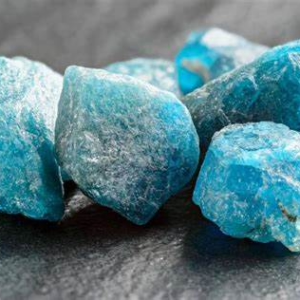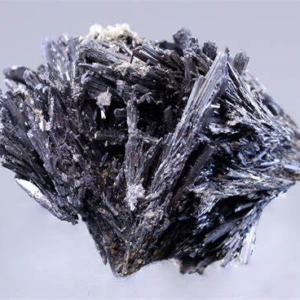phyllosilicate
Phyllosilicates (also known as sheet silicates) are a group of minerals in which the silicate tetrahedra (SiO₄ units) are linked together in sheets or layers. In these minerals, each silicon atom is bonded to four oxygen atoms, forming a tetrahedron, and these tetrahedra are arranged in two-dimensional sheets. The layers of phyllosilicates are held together by weaker bonds, typically between metal cations (such as magnesium, aluminum, or iron) and water molecules or hydroxyl groups (OH). This unique structure allows the layers to slide past each other easily, which is why phyllosilicates often have a slick or slippery feel and may be flexible or flaky.
Key Characteristics of Phyllosilicates:
- Sheet-Like Structure: Phyllosilicates have a distinctive layered structure, where each silicon-oxygen tetrahedron shares three of its oxygen atoms with neighboring tetrahedra, creating two-dimensional sheets. This gives them their characteristic flat, plate-like appearance.
- Cleavage: One of the most defining characteristics of phyllosilicates is their excellent cleavage in one direction, which allows them to break into thin, flexible sheets. This property is especially evident in minerals like mica and clay.
- Water Retention: Many phyllosilicates have a high affinity for water, either within their structure or as part of their chemical composition. This is why they are often associated with the formation of soils and are commonly found in environments where water is present.
- Composition: Phyllosilicates are typically composed of silicon (Si), oxygen (O), and various metal cations, such as magnesium (Mg), aluminum (Al), and iron (Fe). Some phyllosilicates may also contain hydroxyl groups (OH), water molecules, or other elements, depending on their specific chemical formula.
Types of Phyllosilicates:
There are several well-known types of phyllosilicate minerals, including:
- Micas:
- Micas are perhaps the most famous phyllosilicates, known for their shiny, flaky appearance. The most common micas include muscovite (a silvery-white mica) and biotite (a dark brown to black mica). Micas are widely used in electrical insulation, as they are good electrical insulators and are resistant to heat.
- Clays:
- Clay minerals are a large subgroup of phyllosilicates, important in the formation of soils and sedimentary rocks. Some common types of clay minerals include:
- Kaolinite: A soft, white mineral used in ceramics and as a filler in various products.
- Illite: A non-swelling clay mineral commonly found in shale.
- Smectite: A group of minerals (including montmorillonite) that can expand when hydrated, often used in industrial applications such as drilling mud.
- Clay minerals are a large subgroup of phyllosilicates, important in the formation of soils and sedimentary rocks. Some common types of clay minerals include:
- Talc:
- Talc is a soft mineral that is a type of phyllosilicate with a characteristic greasy feel. It is widely used in cosmetics, talcum powder, and as a lubricant in industrial applications.
- Chlorites:
- Chlorite minerals are another subgroup of phyllosilicates. They often contain iron and magnesium and are typically found in metamorphic rocks. Chlorites are important in the geological study of rock metamorphism.
- Serpentine:
- Serpentine is a phyllosilicate mineral that can appear in various greenish hues and is often used as a decorative stone or in the creation of asbestos (though that form is hazardous). Serpentine minerals are found in metamorphosed ultramafic rocks.
Common Uses and Importance:
- Soil Formation: Many phyllosilicates, especially clay minerals, are crucial components of soil, affecting its texture, water retention, and nutrient-holding capacity.
- Industrial Uses: Phyllosilicates, particularly micas and clays, are used in various industrial processes, including ceramics, paints, rubber, and cosmetics. They are also important in the petroleum industry, where they are used as drilling fluids.
- Geological Importance: Phyllosilicates are essential in understanding rock formation processes, especially in the study of metamorphic and sedimentary rocks. They play a significant role in the weathering of rocks and the formation of new minerals over time.
Key Minerals in the Phyllosilicate Group:
- Muscovite (mica)
- Biotite (mica)
- Kaolinite (clay)
- Illite (clay)
- Montmorillonite (smectite clay)
- Chlorite (green mineral)
- Talc (soft, slippery mineral)
- Serpentine (greenish mineral)
Summary:
Phyllosilicates are a group of minerals with a distinctive layered, sheet-like structure. They are important in geology, industrial applications, and the formation of soils. Their ability to cleave into thin sheets, along with their water retention properties, makes them unique and highly functional minerals in a wide range of uses, from cosmetics to geology.
Would you like to know more about specific phyllosilicate minerals, or their role in certain industries or geological processes?


Leave a Reply
Want to join the discussion?Feel free to contribute!